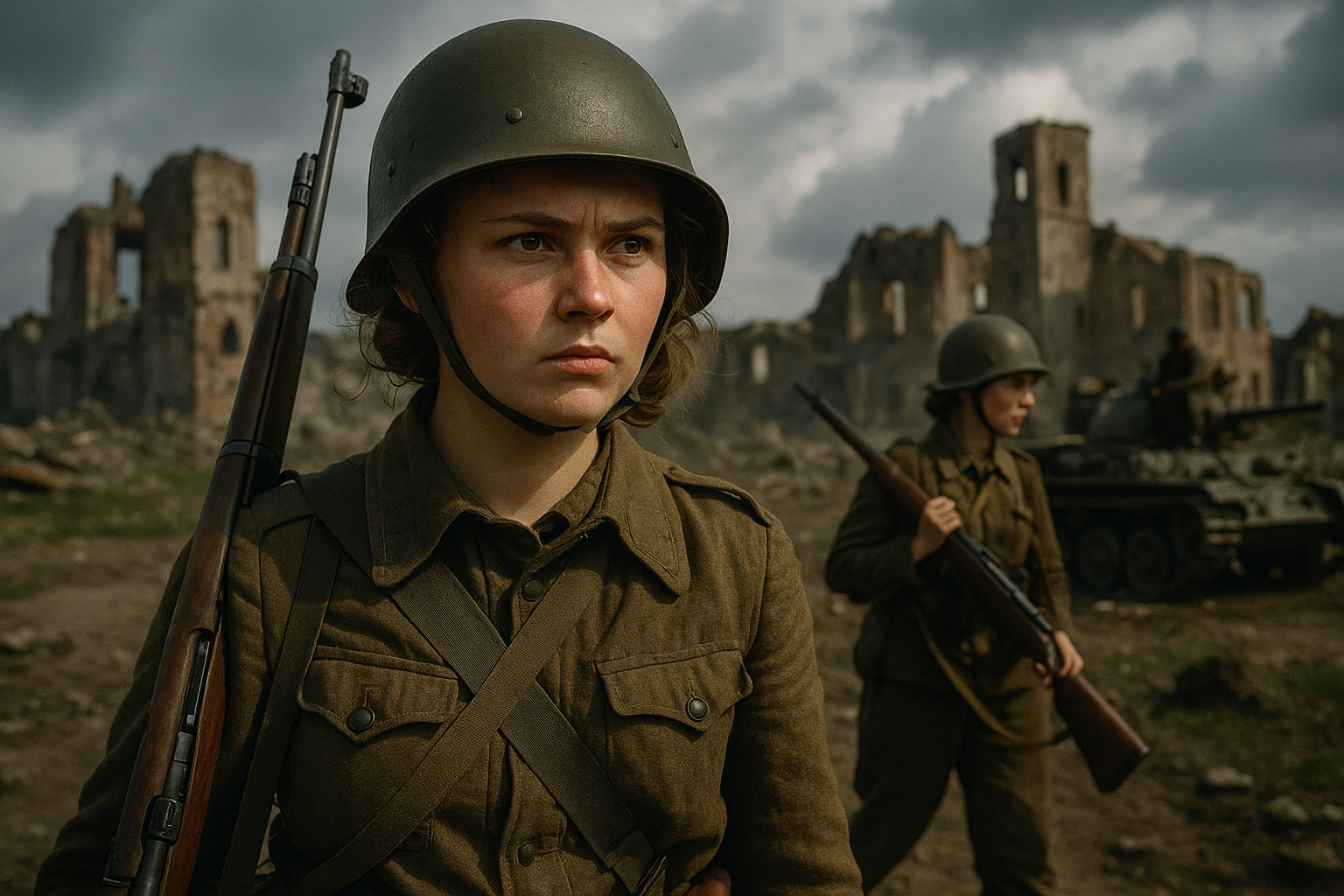The Role of Women in Shaping Society During World War II
Sofia Rodriguez
2025-10-29
6 min read

World War II wasn’t won on battlegrounds alone. The global conflict that redefined nations also catalyzed profound societal changes, and at its core was the incredible role women played in shaping the war effort. Traditionally confined to domestic duties in many parts of the world, women stepped into roles that were both essential and revolutionary. Their contributions extended across industries, military services, and at home, forever altering the trajectory of societal norms and gender roles. This piece explores how women not only supported the war effort but also reshaped global perspectives on their place in society, leaving a legacy that still influences us today.
Women on the Home Front and Beyond
The outbreak of World War II brought monumental shifts to the labor market. With millions of men drafted into the military, there was an urgent need to fill jobs that were crucial to sustaining economies and supporting the war effort. Women became the backbone of production lines in industrialized countries, leading to the rise of the "Rosie the Riveter" icon. Factories needed workers to produce everything from ammunition to aircraft and uniforms. Women quickly adapted to roles such as welding, riveting, and assembly work, occupations traditionally reserved for men. According to the US Bureau of Labor Statistics, the proportion of women in the workforce in the United States grew from 27% in 1940 to nearly 37% by 1945. Beyond industrial contribution, women also worked in agriculture through initiatives such as the Women’s Land Army in the UK. Despite challenging fieldwork, they ensured their countries remained fed in the face of food shortages and rationing. These tasks, though grueling, proved that women were capable of performing—and often excelling at—roles deeply rooted in strength and skill.
Women in Armed Forces
While most women did not serve in combat roles, World War II was a pivot point for female participation in military service. Many nations introduced auxiliary military services for women, opening opportunities to contribute directly to defense strategies. For example, the Women’s Army Corps (WAC) in the United States permitted women to work in administrative, logistical, and even operational roles. Women in the Royal Air Force’s Women’s Auxiliary Air Force (WAAF) in Britain handled critical duties such as radar operations and decoding enemy communications, tasks vital for national security. Meanwhile, women in the Soviet Union took on combat roles, including the feared "Night Witches" of the Soviet Air Force, a group of female pilots who carried out daring bombing missions during the war. The impressive contributions of women in both auxiliary and combat roles temporarily challenged the stigma surrounding women in military functions. Their bravery and competence became undeniable, even to the most skeptical onlookers.

The Impact on Family Dynamics
The participation of women in workforces and military services reshaped family structures and dynamics. With many mothers working long hours in factories, grandparents, extended relatives, and community support systems became essential to childcare and household management. However, this era wasn't without its struggles. Many women juggled their new roles while still fulfilling household responsibilities. The concept of the "double burden" emerged, highlighting the physical and emotional toll these expectations took on women. Nevertheless, women’s expanded role set the stage for conversations about social reform, particularly around parenting support, workplace policies, and gender equality.
Post-War Progress and Pushback
When the war ended, many women were expected to relinquish their positions and return to domestic duties to make way for returning soldiers. While some willingly returned to these roles, others resisted. Women who had experienced autonomy and purpose in their wartime roles were often reluctant to surrender them. This resistance planted the seeds for the feminist movements that gained momentum in the decades following the war. Women had tasted a degree of professional acknowledgment and social freedom previously inaccessible to them, and they weren’t willing to be sidelined again without a fight. Still, societal progress was uneven. Wartime experiences varied widely based on race, class, and nationality. For example, while factory floors became more diverse, women of color often faced discrimination and were relegated to lower-paying or menial roles.
Legacy of Women’s Contributions
World War II marked a turning point in the global perception of women’s capabilities. It became evident that women, when given the opportunity, could thrive in roles historically deemed unsuitable for them. This realization laid the foundation for future societal reforms, including those tied to workplace equality, voting rights in certain nations, and the increasing visibility of women in decision-making positions. The stories of women who contributed to the war effort—from aircraft assemblers and codebreakers to pilots and administrators—live on as reminders of their resilience and potential. They proved that gender should never be a barrier to contribution, competence, or courage.
A Changed World
The role of women in shaping society during World War II transcends mere historical significance. It set a precedent, proving that societal norms are not fixed but can evolve under necessity and determination. By stepping into roles that were once off-limits to them, women built a legacy that inspired generations to question traditional boundaries and strive for equality. Their courage and innovation continue to shape how we perceive gender roles today. And while challenges still exist, the resilience and determination of those who came before remind us that progress is not only possible but inevitable when driven by collective action and vision.



